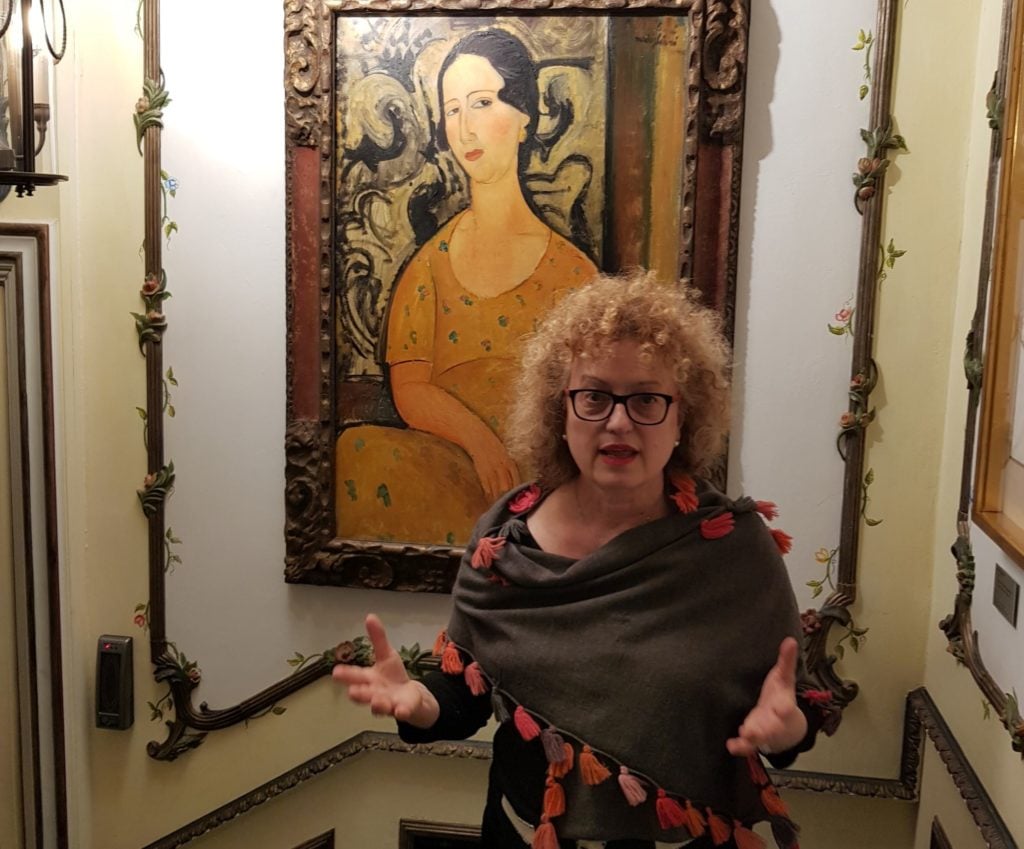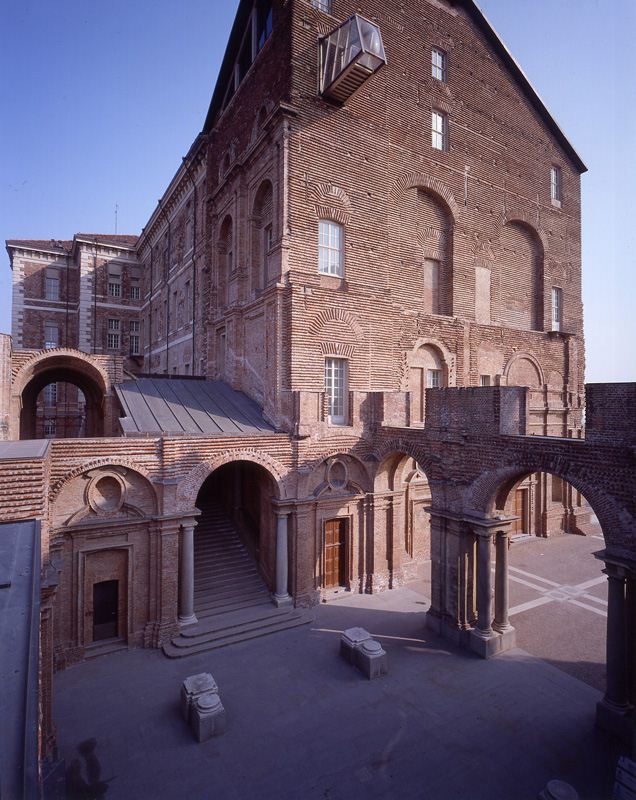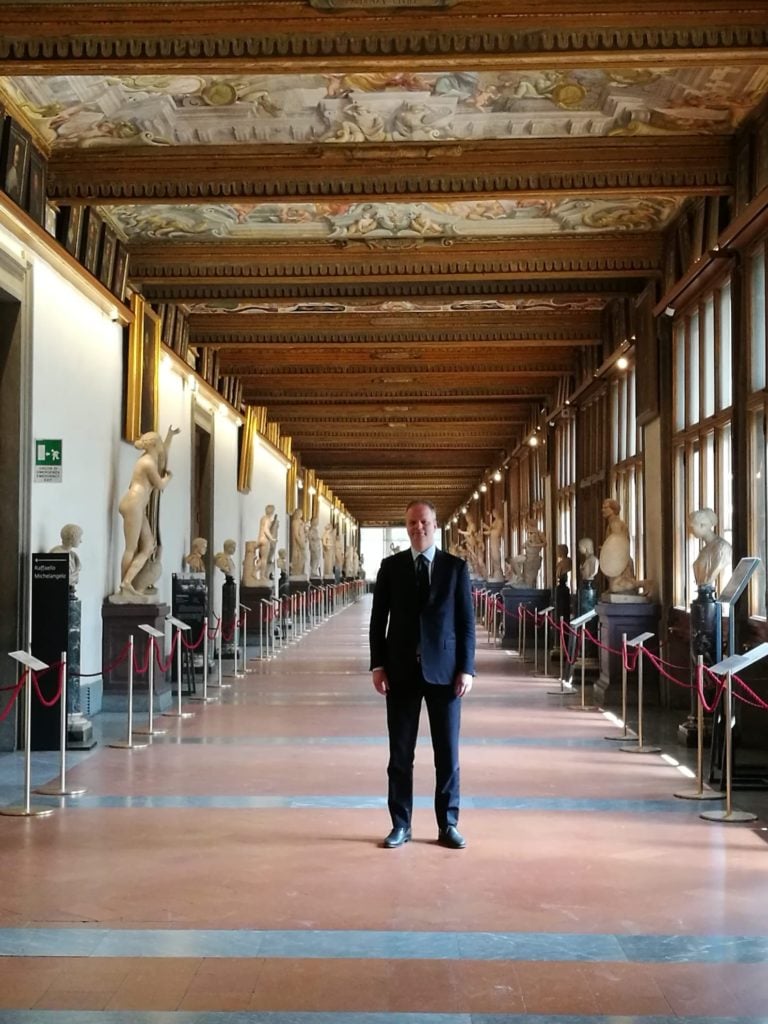Art World
A World-Famous Curator Is Working 18-Hour Days to Put One of Italy’s Top Museums Online So Italians Can Visit From Quarantine
Carolyn Christov-Bakargiev says it's the museum's “public duty" to make its art accessible.

Carolyn Christov-Bakargiev says it's the museum's “public duty" to make its art accessible.

Javier Pes &
Naomi Rea

The Castello di Rivoli near Turin, like every other museum in Italy, has been forced to close amid the coronavirus epidemic.
But its director, Carolyn Christov-Bakargiev, is working 18-hour days to fast-froward the museum’s digital initiatives to make its exhibitions and collections accessible online.
Taking a break, Christov-Bakargiev tells Artnet News that it’s the museum’s “public duty,” as 60 million Italians have been placed under lockdown.

Castello di Rivoli—Museo d’Arte Contemporanea. Photo courtesy Castello di Rivoli.
To make it all possible, Christov-Bakargiev and her team have been scrambling to record and edit new virtual tours of the Modern and contemporary art museum, which had just opened three special exhibitions before the forced lockdown was put in place. They are posting them online in a new virtual venue called “Digital Cosmos.”
The curator started by focusing on still lifes in the collection by artists including Giorgio Morandi. A spokesperson said the decision was made because the genre has often served as a way for artists to ruminate on nature and mortality.
Among the first works in the Castello di Rivoli collection to be featured in the new series is Maurizio Cattelan’s embalmed horse, Novecento (1900) (1997), which hangs from the ceiling in a sling. Works by artists including Michael Rakowitz, Giuseppe Penone, Ed Atkins, James Richards, and Renato Leotta will also be included in the initiative.
The museum is also creating online tours aimed at children and their parents who are stuck at home now that all schools are closed.
“It is important for people’s state of mind,” Christov-Bakargiev tells Artnet News. She also hopes art will be a welcome alternative to the continual, and stressful, stream of public health warnings.
Two weeks ago, the Castello di Rivoli, along with other museums in Milan and Venice, were instructed to close. Last week, after they were briefly allowed to reopen, they were shut down again on Saturday. On Monday, the 14 quarantined “red zones” in Northern Italy were extended across the whole of the country. Large-scale gatherings, including sporting events, have been forbidden.
That means that the Palazzo Strozzi’s sprawling Tomás Saraceno exhibition is now closed.
“It is very sad to shut the doors,” says the museum’s director, Arturo Galansino. “[Saraceno’s] show speaks about how we are part of a net of connections, and how all our individual and collective actions count.”
With most of his staff working at home, he hopes to announce a series of digital initiatives in the coming days.

Eike Schmidt. Courtesy Uffizi Galleries.
Meanwhile, the Uffizi is launching a social media campaign to keep people in touch with art. The museum’s Instagram and Twitter pages will be updated daily with photos, videos, and stories focused on the masterpieces in its collection. The gallery has also started a new dedicated Facebook page, and will be updating its YouTube account.
“Even though museums have had to close their doors, art doesn’t stop,” the director of the Uffizi Galleries, Eike Schmidt, said in a statement.
The campaign has been named the #UffiziDecameron in a nod to Giovanni Boccaccio’s 14th-century novel, The Decameron, in which 10 young people take refuge in the hills above Florence to escape the plague, telling stories to combat boredom.
“The Uffizi will be with you, in your homes, to overcome all together the current difficult moment,” the museum said in a statement. “Let us avoid any contagion, except that of beauty.”
The museum will also be hosting a series of virtual mini-tours in which museum assistants will share some of their favorite parts of the galleries on video.
Finally, the galleries are producing content to mark the 500th anniversary of the death of Raphael. The initiative will go some way in offsetting the closure of a major Raphael exhibition in Rome, to which the Uffizi lent around 50 works. (But you can also see that show online.)